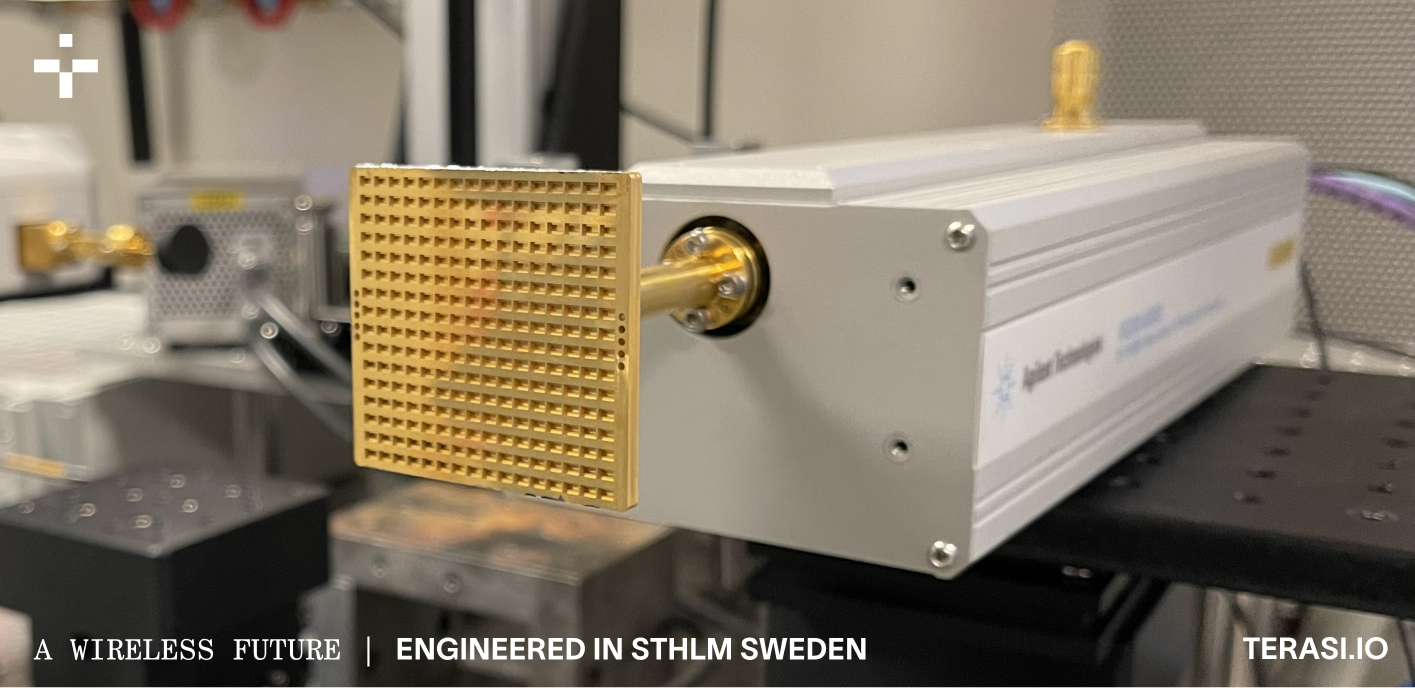
In a recent interview with Sweden's leading technology media outlet NyTeknik, James Campion, CEO of TERASi, shared insights on how we aim to shape the future of wireless technology with pioneering approaches and products aimed at enhancing the efficiency and scalability of 5G and 6G networks.
The key points from the conversation, summarized below, emphasize TERASi’s role in a rapidly evolving telecommunications landscape and our long term goal of enabling the next generation of wireless technology through innovative hardware.
A Shift Towards Higher Efficiency in Wireless Systems
"We’re developing hardware that is significantly more efficient, smaller, lighter, and cheaper" - James Campion
Among the central challenges facing contemporary wireless technologies, especially those using higher frequencies, is the low level of efficiency. System efficiency is a measure of how effectively the input DC power is converted into an RF signal. Although today's wireless technologies can offer high output power levels, the overall efficiency is often limited by the high losses in passive components such as antennas and filters. TERASi addresses these inefficiencies by focusing on improving the performance of these passive components and implementing new ways of miniaturising and integrating them.
New Product Lines - New Possibilities
"We can make components up to a hundred times smaller and lighter. But we can also improve performance because of the quality we have in manufacturing" - James Campion
Following a successful funding round in fall 2023, TERASi recently introduced its first products, showcasing highly compact waveguide filters and antennas that deliver cutting-edge performance without the bulk of conventional waveguide technolgies. This approach not only revolutionizes the component size but also enhances their integration into existing and future wireless systems. TERASi plans to launch its first complete module offerings, where several passive components are combined with active dies, in early 2025. These modules are suitable for use in dense urban environments, on miniaturized satellites or aboard unmanned vehicles.
Strategic Focus on System in Package
Looking ahead, TERASi is focusing on System in Package (SiP) technology, which allows multiple chips and components to be mounted and interconnected within the same package to form a complete RF front-end. This method is crucial for integrating efficient passive components with active components such as CMOS chips. Although SiP architectures are nothing new, TERASi's innovative approach to creating RF interconnects between different technologies has the potential to revolutionize this paradigm. For more details on our approach see our technology page.
Foundries for the Future
"In the industries we operate in, security and intellectual
property rights are important. Our customers want to own the design and IP. Smaller customers can also benefit from a foundry model where we can combine orders from many." - James Campion
TERASi long term plan is to adopt a foundry model similar to that used by semiconductor giants like TSMC and Intel, which would allow customers to develop custom solutions using TERASi's technology. This model aims to enhance scalability and reduce the need for extensive in-house engineering capabilities among TERASi's customers while allowing them to own their key IP. TERASi plans to offer small scale foundry services to selected customers later this year.
Environmental Concerns and Sustainability
"As we move towards 6G, we will have ten times more devices compared to now. We already use a lot of energy for today’s infrastructure. Sustainability has finally become a key issue in the telecom sector." - James Campion
The sustainability of future wireless systems is critical, and TERASi is at the forefront of making these systems more energy-efficient and less resource-intensive by providing hardware that cuts out unnecessary materials, weight and signal losses. The ICT sector already accounts for several percentage points of global emissions and is forecast to consume over 20% of the global electricity supply by 2030. These figures highlight the need for fundamental improvements at all levels of the hardware stack and new approaches to system design to minimize the impact of the next generation of wireless.
Bringing It All Together
"The push for change must come from demands placed on suppliers and operators. - James Campion
With a focus on improving component efficiency, embracing innovative manufacturing techniques, and fostering sustainability, TERASi is not just preparing for the future demands of the telecom sector but is actively shaping them. This forward-thinking approach promises to bring substantial benefits not only to the telecom industry but also to the broader technological landscape, marking a significant step towards a better, more connected future.
Check out the complete article for further details:

